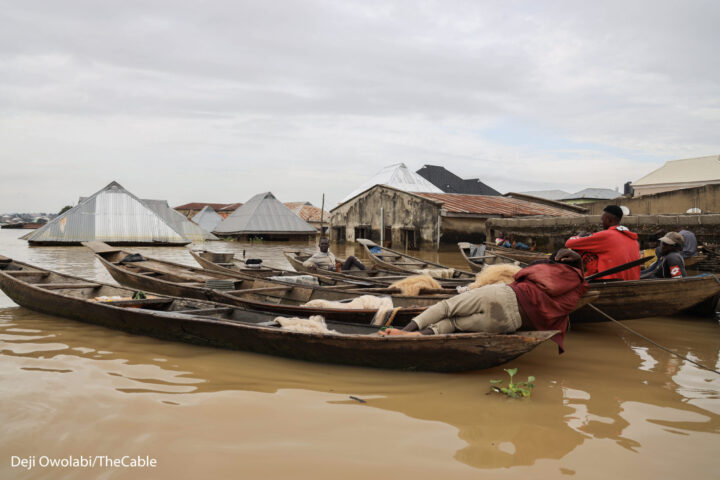Their houses have been submerged. Now, they fish and sleep on the flooded water
Jethro Yacim, a retired police officer in his early 60s, sat in front of the first floor of his storey building with his index finger scrolling through his smartphone. The ground floor has been overrun by water. Behind the house were other landed properties he laboured for over 35 years to acquire with his wife. They have all been submerged by the flood.
His wife, Ruth, who walked the TheCable team through Adankolo, Ganaja village, and other flooded parts of Lokoja, Kogi state capital, also lost her firewood business to the recent disaster.
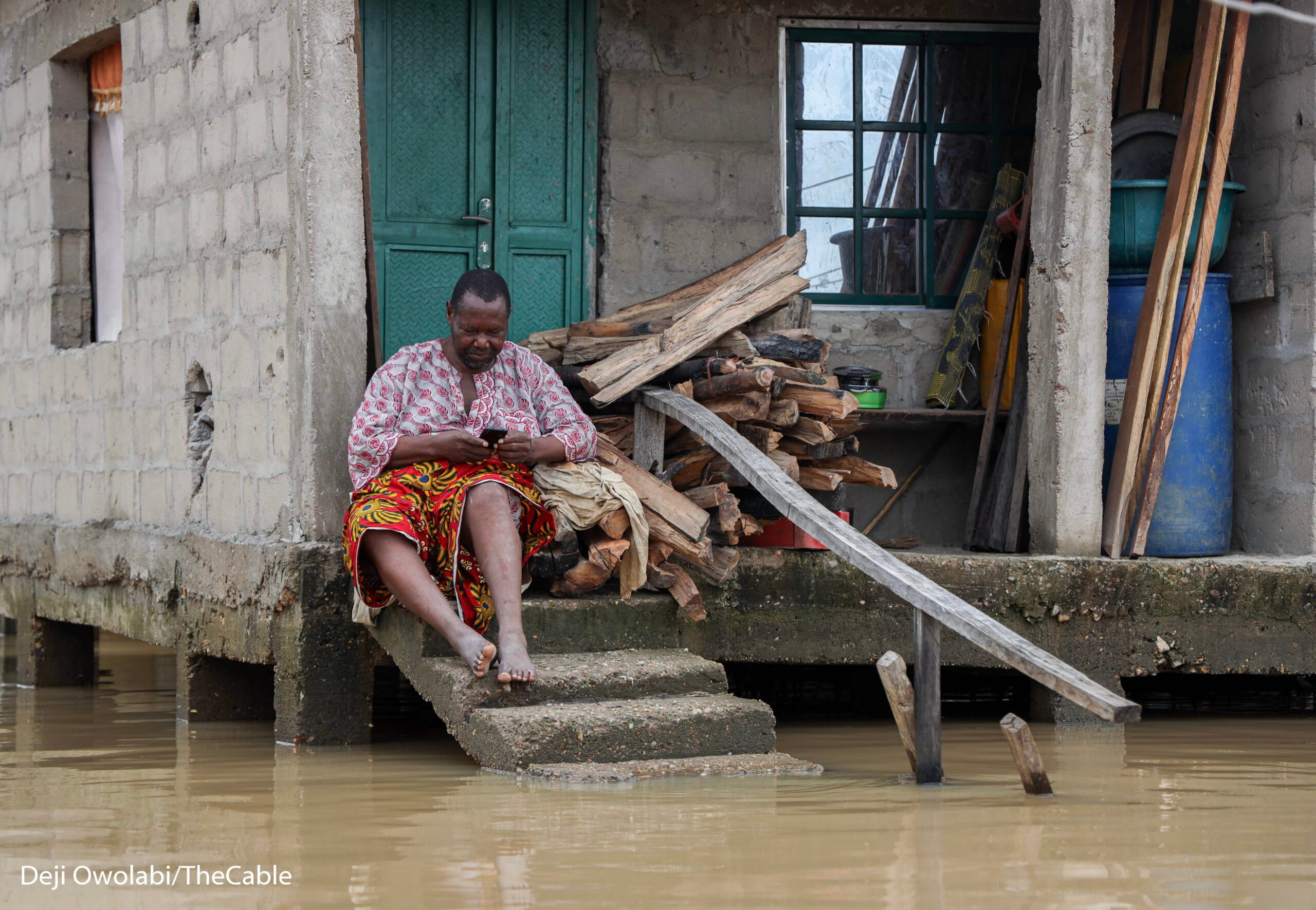
Jethro and Ruth were sleeping on the night of September 15 when they heard the gushy sound of water hitting the main entrance door of their house.
They tried to save all they could, but their efforts yielded little results because the flood caught them unawares. By 11am when the morning sun was in its full glare, the flood had taken over the ground floor while other buildings around had been totally submerged.
Advertisement
Now, the couple feeds on donations from relatives and churches.
“At some point, we were wondering if the flood was normal water because of the intensity. We started packing some loads up before daybreak. The water killed our goats — six nannies and eight kids,” Ruth said soberly
“I bought some wood for N180,000 and I kept them inside a room. The water swept everything away. I also lost my grinding machine to the flood. Our relatives outside Kogi and our church have been the ones feeding us. It’s been a devastating moment for us.”
Advertisement
WHEN THE FLOODS CAME LIKE A THIEF IN THE NIGHT
Joseph Gideon, 34, thought it was going to be business as usual when he saw water seeping through the floor of his two-bedroom apartment.

Gideon said he could only save a little of his belongings when the flood took over the whole apartment. He would have been dead alongside his wife and child if not for his in-laws who hired a canoe to rescue them.
He was able to pack some of his properties to his neighbour’s compound, but the house also got submerged 48 hours later. Gideon currently remains helpless and homeless.
Advertisement
Musa Yakubu, and his sibling, Umar, were hardworking farmers in Onuma Ye, a riverine village around the Koton Karfe area of Kogi. They were specialists in planting vegetables, rice, and fruits until they went to their expansive farm to see the ruins caused by the flood.

Musa said any attempt to estimate the cost of the things he lost to the incident will only break him down emotionally.
Asides from the waterlogged farm, their house was also submerged. This pushed them into another agony. Together with over 2,000 displaced residents, they live on the “water park”, an artificial island dredged in the middle of the waterway.
“This happened in 2012 but it wasn’t this much. The current situation is just too much. We planted rice, maize, okra, and cassava on the farm here (pointing into the water). The flood took over everything we planted before daybreak. Umar and I rely on this boat to earn a living,” Musa told this reporter, with a face full of worries.
Advertisement
With their local canoe, Musa and Umar ferry commuters from Koton Karfe to Lokoja. But they are still worried about their survival when the flood recedes from the road.
Advertisement
This is not the first time that Kogi will be facing a flooding problem; it is a yearly occurrence. While many believed that the state had seen it all during the 2012 flood, affected residents randomly interviewed by TheCable said otherwise.
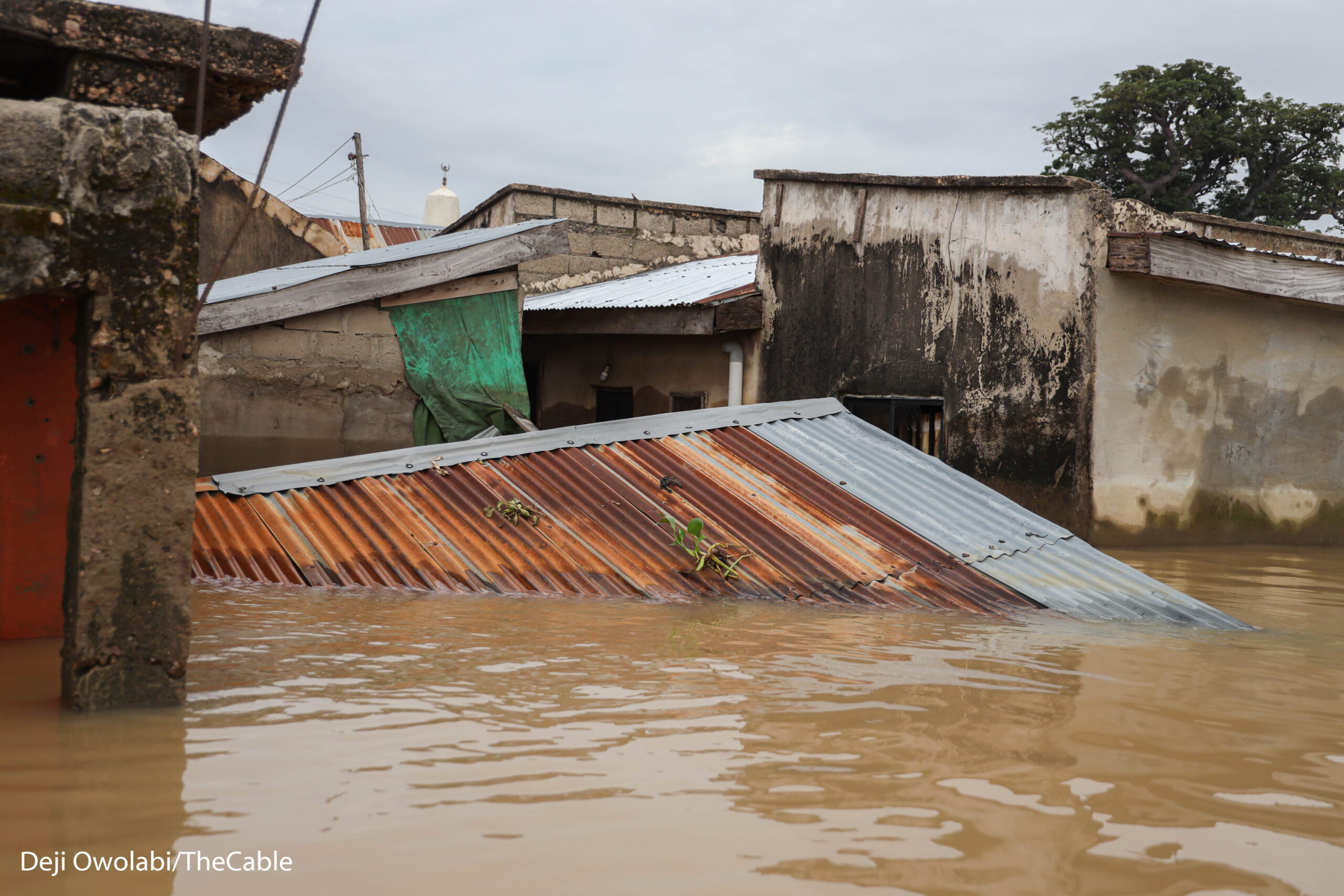
Yahaya Bello, Kogi governor, said the flooding affected nine LGAs that lie along the Niger and Benue rivers, namely, Lokoja, Kogi/ Koton Karfe, Ajaokuta, Ofu, Igalamela-Odolu, Bassa, Idah, Ibaji, and Omala.
Advertisement
Bello said Ibaji is almost 100% underwater, while some affected areas are around 30% flooded.
LAGDO DAM
Advertisement
In an impact-based weather forecast for August 30 to September 1, 2022, the Nigerian Meteorological Agency (Nimet) warned that there will be heavy rainfall anticipated in parts of Kaduna, Niger, Bauchi, Plateau, the FCT, and Nasarawa states.

The agency added that there will also be an expected moderate to heavy rainfall in Kwara, Oyo, Kogi, Ogun, Ekiti, Ondo, Sokoto, Katsina, Zamfara, Kebbi, Kano, Jigawa, Yobe, Borno, Gombe, Adamawa, Taraba, Benue, Cross River, Akwa Ibom, Ebonyi, Enugu, Abia, Imo, Anambra, Rivers, Edo and Delta State.
The prediction did not fail. The heavy rainfall later led to flooding in some parts of the country. However, the opening of the Lagdo dam in northern Cameroon reinforced it.
According to the National Emergency Management Agency (NEMA), the released water from the dam would cause heavy flooding in 13 states: Adamawa, Taraba, Benue, Niger, Nasarawa, Kebbi, Kogi, Edo, Delta, Anambra, Cross River, Rivers, and Bayelsa.
Even, the agency warned that between September 20 and the end of October, the Kainji, Shiroro, and Jebba dams could overflow, and the situation may be worse owing to the release of water from Cameroon.

On September 13, the operators of the dam opened its floodgates to commence the release of excess water from the reservoir to avoid breakage.
From northern Cameroon to Nigeria, the water cascaded into the country through river Benue and its tributaries, thereby intensifying the flooding caused by the rain.
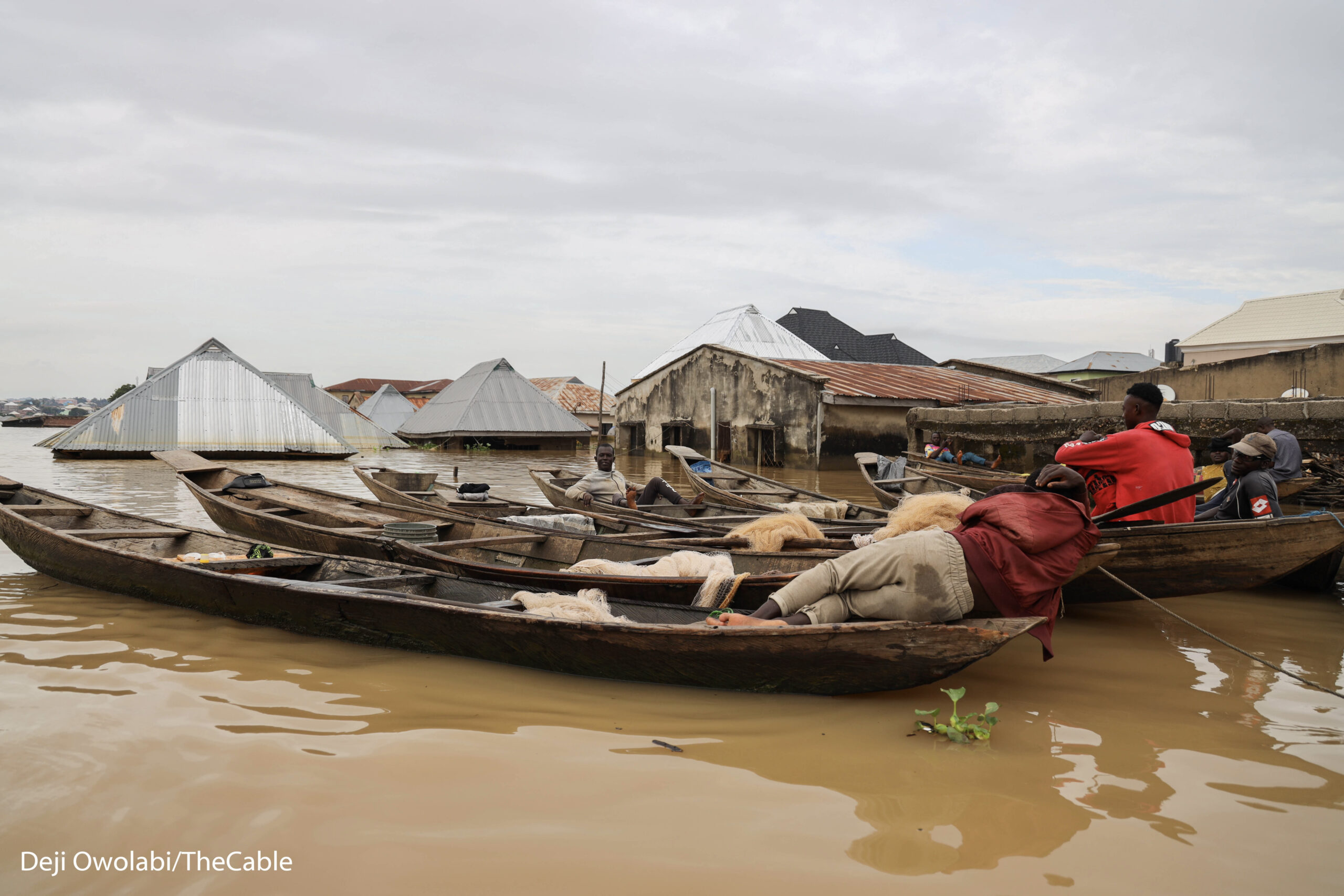
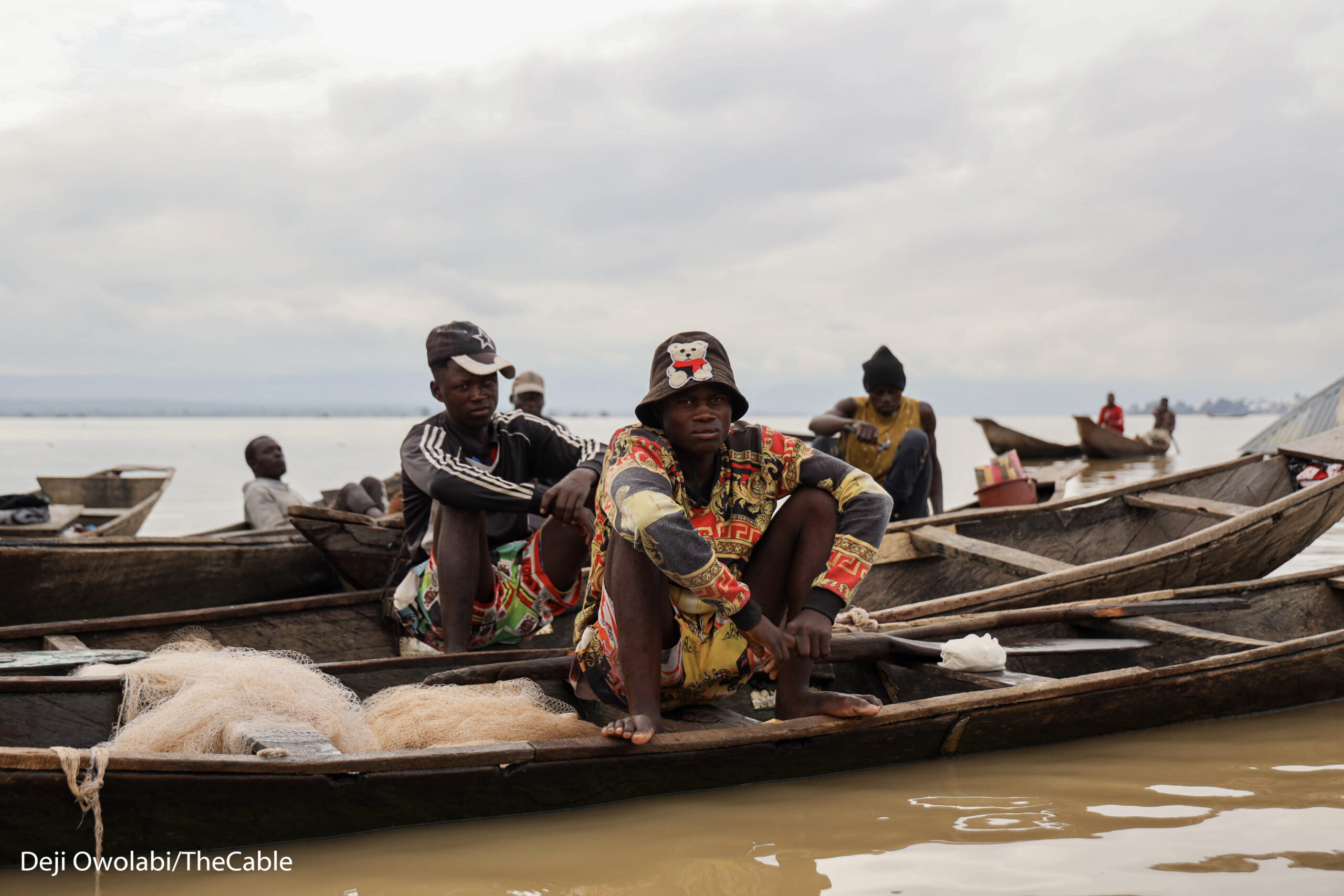
Located in northern Cameroon, the Lagdo dam was built in 1977 and completed in 1982.
Reports indicate that Cameroon and Nigeria had an agreement to build two dams. Whenever excess water is released from Cameroon’s Lagdo dam, the Nigerian dam would contain it and prevent flooding.
To meet up with the agreement, the Nigerian government committed to building a dam along the course of the Benue River, ostensibly to contain the gushing water released upstream from Lagdo dam.
In 1981, a “shock-absorber” dam was designed and named the Dasin Hausa Dam. The dam project facility was, besides cushioning the effect of the Lagdo dam flooding, drafted to generate 300 megawatts of electricity and irrigate about 150,000 hectares of land.
The project, situated in Dasin village in Fufore LGA of Adamawa, was supposed to be two and a half the size of the Lagdo dam. The Nigerian government is yet to complete the Dasin Hausa Dam project.
Without the proposed “shock-absorber”, whenever the Lagdo dam is opened to release excess water from its gates, it has always ended in tears and agony for Nigerians who live along the river path.
When asked about the Dasin Hausa Dam project, Suleiman Adamu, minister of water resources, said “whether we are able to do the dam or not, we will continue to have floods on the Rivers Niger and Benue Basins.”
“There was a consultant appointed by the previous administration to work on this dam. When I came into the office, I checked the scope of work and the terms of reference. I was not satisfied that justice would be done to that design,” Adamu said.
“You can not build a dam as important and strategic as Dasin Hausa on River Benue without detailed feasibility and engineering design. I disengaged the consultant in 2016. It was one of the 116 projects that we had.”
The minister, however, expressed optimism that by March 2023, the dam would be completed.
Sadiya Farouq, the minister of humanitarian affairs, disaster management and social development, said the current flood situation in the country has claimed 603 lives, affected 2,504,095 persons, displaced 1,302,589; and injured 2,407.
The minister added that 121,318 houses have been partially damaged and 82,053 others completely destroyed, as well as 332,327 hectares of farmlands damaged.
For everyone you meet in Kogi during the heat of the flooding, they would always refer back to the 2012 flooding.
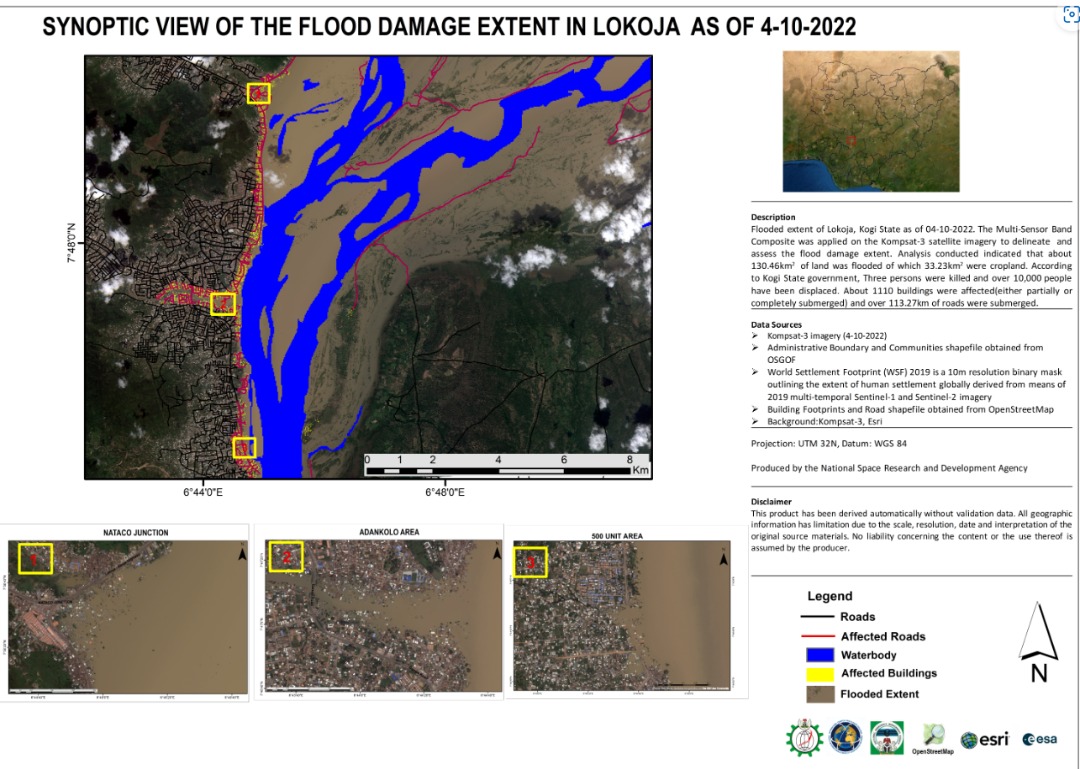
According to a Post-Disaster Needs Assessment (PDNA) conducted on the 2012 floods, the impact of the flooding was very high in terms of human, material, and production loss, with 363 people killed, 5,851 injured, and 3,871,53 displaced.
The report stated that Kogi was particularly one of the hard hits with a record of over 600,000 dead and displaced, as well as the destruction of farmlands and property.

The National Inland Waterways Authority (NIWA) noted that the 2012 flood level was 12.84 meters, whereas that of 2022 is reading 13.22 meters, a 44% increase.
ThinkHazard, a Worldbank group project tool designed to promote disaster and climate resilience, documented that potentially damaging and life-threatening river floods are expected to occur at least once in the next 10 years in Kogi.
EXPERTS: WE NEED TO HOLD OUR LEADERS RESPONSIBLE
Iyaomolere Mayokun, an environmental officer and founder of Plogging Nigeria Club, said Nigerians need to be proactive in demanding accountability from the Nigerian government.
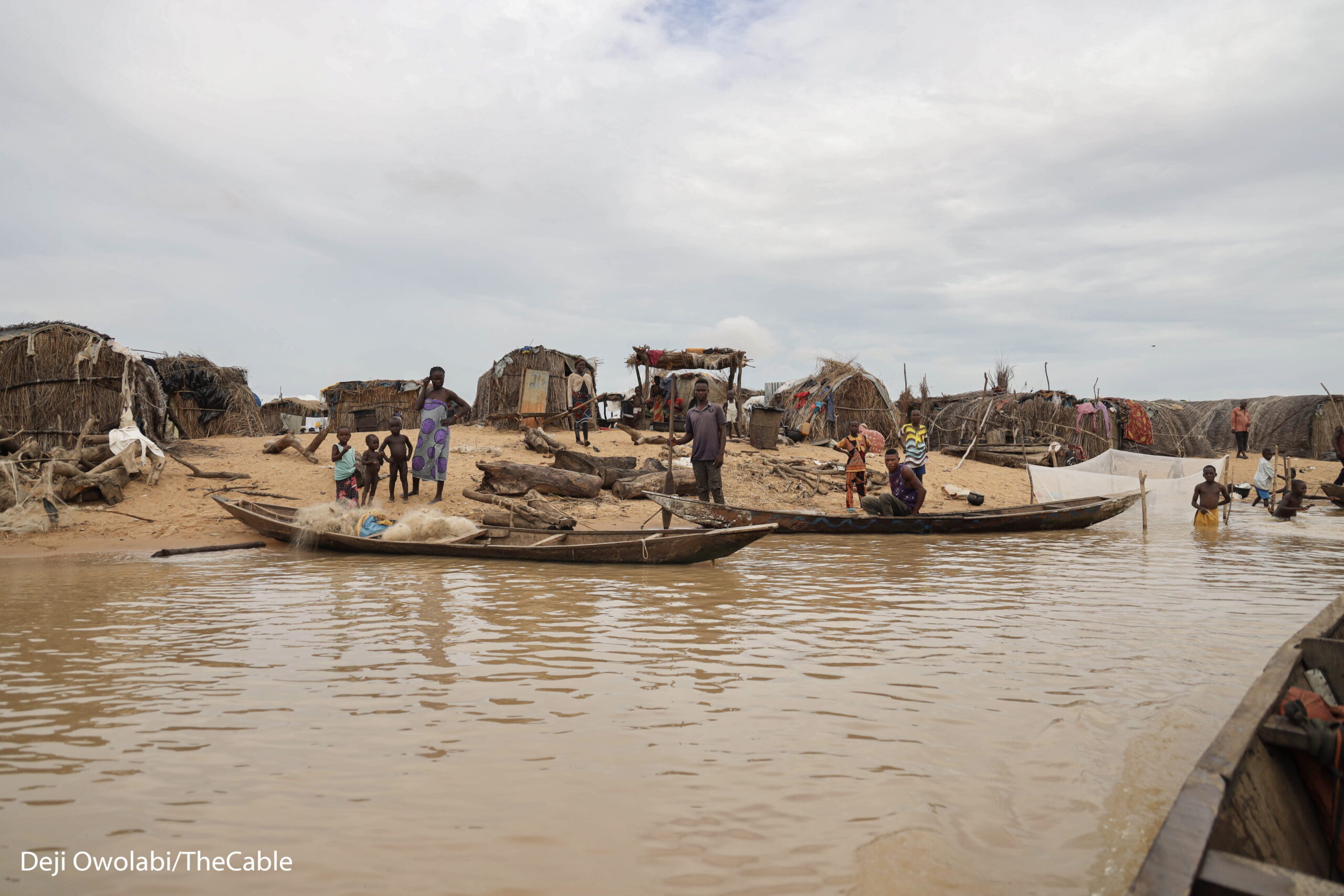

Mayokun said the masses may continue to suffer from devastating flooding if accountability steps are not taken to stop future occurrences.
“The situation in Kogi is very critical. Kogi is a strategically located state connecting the southern and northern parts of the country. Because of the flood, many socio-economic activities have been affected because there’s no road for transportation between the two zones,” Mayokun said in a chat with TheCable.
“The fact that it happened in 2012 and is happening again in 2022 does not mean it will happen again in 2032. But that could be a pattern. Even nature works in cycles. We must understand this, take forecasts from NIMET and other agencies seriously, and ensure early warning messages get to all parts of the country. We must start building the sort of infrastructure that can be resilient to this level of flooding. It would be shameful if we get hit like this again and we can not handle or deal with it better.”
Akintunde Babatunde, climate change and development policy expert, said lack of transparency around certain provisions to mitigate climate change, like the ecological fund, is a threat to the growth of the country.
The ecological fund is an intervention by the government to address the multifarious ecological challenges in various communities across the country.
“With the current news of flooding and associated environmental disasters, it shows that climate change is no longer a threat but a reality and the evidence is here with heavy and unusual rainfall. But the failure of the government to create structures that will mitigate the flooding is one way we should look at,” Akintunde said.
“Annually, we budget billions for flood/erosion control projects. Lack of transparency and accountability around ecologically funded projects, poor early warning messaging, and lack of proactiveness on the part of government and citizens are part of the many reasons why we are facing these challenges.
“More than ever, it is important for us to interrogate the numbers to be sure funds meant for these ecological-funded projects are spent well.”
For Kogi residents, the consistent flooding is a harsh reality they have to live with every year.
Add a comment
